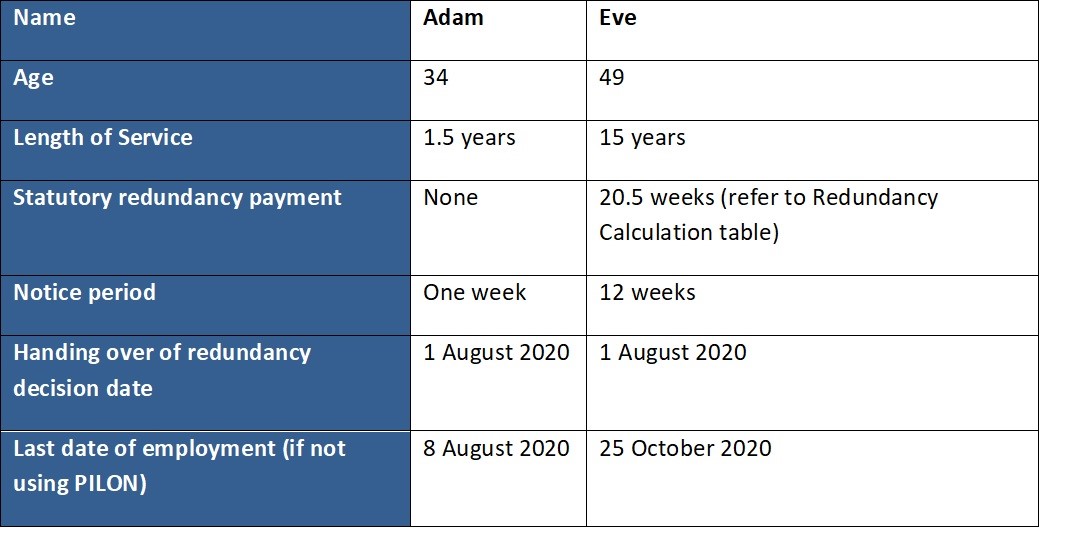Explained: If a Company Goes Bust Who Pays Redundancy in the UK?
Explained: If a Company Goes Bust Who Pays Redundancy in the UK?
Blog Article
Examining the Interplay In Between Business Redundancy and Organizational Versatility for Future Development
In the vibrant landscape of today's organization globe, the intricate connection in between firm redundancy and organizational adaptability emerges as a crucial element for sustained development and success. Firms often deal with the difficulty of striking a fragile equilibrium in between keeping a degree of redundancy to mitigate risks and cultivating adaptability to respond quickly to the ever-evolving market demands.
Value of Firm Redundancy
Firm redundancy is a critical component that enhances organizational resilience and reduces operational dangers. By integrating redundancy procedures within the business framework, companies can much better hold up against unanticipated disturbances and changes in the organization atmosphere. Redundancy acts as a strategic buffer, enabling firms to adapt and respond efficiently to unforeseen difficulties without endangering necessary procedures.
One key element of the importance of business redundancy is its role in ensuring connection throughout times of dilemma. When faced with abrupt adjustments or emergency situations, repetitive systems, resources, or personnel can action in to preserve important functions and prevent prevalent disturbances. This connection not only safeguards the company's reputation and customer count on however also reduces monetary losses and operational downtime.

Strategies for Organizational Adaptability

Creating versatile business frameworks that enable for fast modifications to market dynamics and client requirements is necessary for remaining affordable in a swiftly evolving environment. By proactively identifying potential disruptions and chances, organizations can proactively adjust and prosper in an ever-changing organization landscape.
Harmonizing Redundancy and Adaptability
Achieving a harmonious equilibrium between operational redundancy and organizational adaptability is critical in navigating the intricacies of a vibrant business setting. Redundancy within a company provides a safety net, ensuring connection and security in procedures. Nevertheless, an extra of redundancy can cause ineffectiveness and impede adaptability to transforming market problems. On the various other hand, organizational adaptability allows companies to react immediately to external interruptions and seize new possibilities. Striking the ideal balance between redundancy and flexibility is a delicate process that requires a deep understanding of the company's goals, industry characteristics, and danger resistance.
To accomplish this equilibrium, firms require to conduct regular evaluations of their procedures to recognize areas where redundancy is necessary for danger reduction and where adaptability can drive advancement and development. Implementing flexible structures, promoting a culture of constant discovering and renovation, and urging open interaction across all degrees of the company are vital strategies to harmonize redundancy and flexibility properly. By straightening these 2 vital aspects, companies can place themselves for lasting growth and success in an ever-changing company landscape.
Study on Adjustment Success
In checking out circumstances of successful organizational adjustment, it ends up being apparent that the interaction in between functional redundancy and adaptability is a specifying consider forming resistant organizations. One compelling study is that of Netflix. At first a DVD rental solution, Netflix showed impressive flexibility by look at this now transitioning into a streaming system when digitalization interrupted the industry. By purposefully buying technology and material creation, Netflix not just flourished yet made it through in a rapidly progressing market. Another standout instance is Amazon. Starting as an on-line bookstore, Amazon continuously adjusted its company version, expanding right into diverse fields such as cloud computing and expert system. This flexibility enabled Amazon to remain ahead of competitors and fulfill changing customer demands. Finally, Adobe gives a notable image of successful adjustment. The firm shifted from offering software application licenses to a subscription-based version, ensuring persisting earnings streams and enhanced client involvement. These study emphasize the importance of functional redundancy coupled with organizational flexibility in fostering long-lasting development and competitiveness.
Building Durability for Future Growth
Building Recommended Reading resilience for future growth requires a critical placement of functional procedures with market dynamics and emerging trends. Companies should adapt to changing environments by fostering a society of adaptability, innovation, and continuous improvement. Resilience involves not only recovering from problems but also proactively planning for future obstacles. One vital facet of structure durability is investing in robust risk management strategies to reduce prospective disruptions. This consists of situation planning, expanding supply chains, and creating contingency strategies for different contingencies (who pays redundancy money).
Additionally, fostering solid relationships with stakeholders, such as consumers, workers, distributors, and the neighborhood, is important for weathering unpredictabilities and preserving trust fund and support throughout turbulent times. Efficient communication and transparency play a vital duty in building durability, as they help promote and align expectations cooperation in navigating uncertainties.
In addition, organizations need to focus on learning and advancement campaigns to upskill employees and furnish them with the essential tools to adapt to altering scenarios. By buying their workforce, companies can improve their flexibility and dexterity, ultimately reinforcing their resilience for sustainable future growth.
Final Thought

In the dynamic landscape of today's company globe, the intricate relationship between business redundancy and business versatility emerges as a critical variable for continual development and success. Companies commonly deal with the challenge of striking a delicate balance in between keeping a degree of redundancy to alleviate dangers and cultivating flexibility to respond quickly to the ever-evolving market needs.To accomplish this equilibrium, companies require to conduct routine evaluations of their operations to identify areas where redundancy is necessary for risk mitigation and where versatility can drive technology and growth.In final view thought, the interplay in between firm redundancy and business flexibility is essential for future growth. Structure durability via a mix of redundancy and adaptability will guarantee that business are prepared for the obstacles of the future.
Report this page